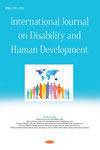Disability around the world
International Journal on Disability and Human Development
Pub Date : 2017-01-24
DOI:10.1515/ijdhd-2016-7000
引用次数: 0
Abstract
Disability studies in childhood have found prevalence figures ranging from 1.1 to 56.7 per 1000 children, which can be seen as variations in definitions used and populations studied [1]. Studies, for example, from Israel in the 1980s found a disability rate of 8.9% among 2–3 year olds and 17.5 % among 7 year olds [1]. Another study conducted in Israel during 1995–1998 found a total disability rate of 12.8%, but 3.6% had a handicap not affecting the functioning of the child, 0.8% had a temporary problem and 0.7% only received treatment periodically, leaving a total of 7.7% with a chronic disability [1].世界各地的残疾
儿童残疾研究发现,患病率为每1000名儿童1.1至56.7,这可以被视为所用定义和所研究人群的差异[1]。例如,20世纪80年代来自以色列的研究发现,2-3岁儿童的残疾率为8.9%,7岁儿童为17.5%[1]。1995-1998年在以色列进行的另一项研究发现,总残疾率为12.8%,但3.6%的儿童有不影响其功能的残疾,0.8%的儿童有暂时性问题,0.7%的儿童只定期接受治疗,共有7.7%的儿童患有慢性残疾[1]。
本文章由计算机程序翻译,如有差异,请以英文原文为准。
求助全文
约1分钟内获得全文
求助全文

 求助内容:
求助内容: 应助结果提醒方式:
应助结果提醒方式:


